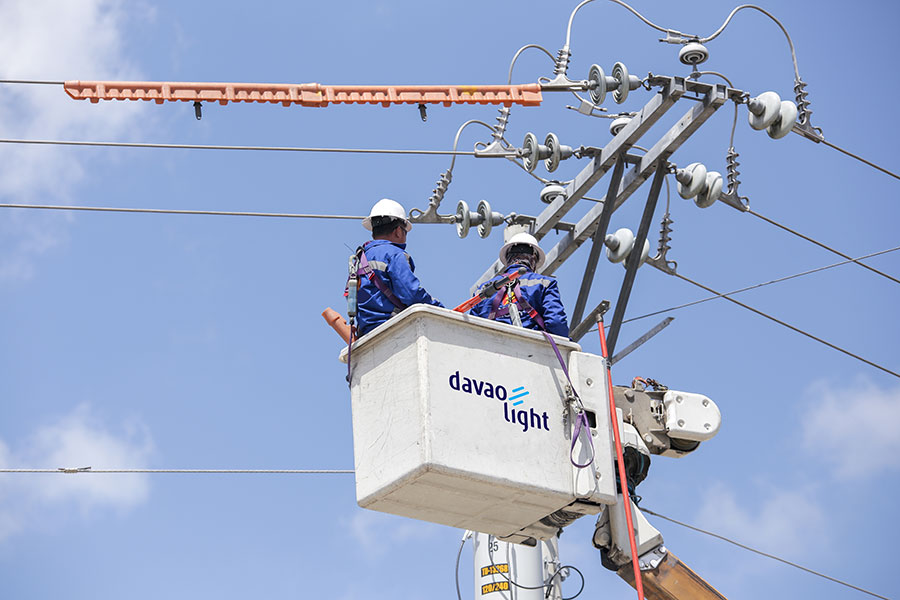We recently launched our Electric Vehicle (EV) Fleet Transformation Program, which aims for a 40% EV share of our distribution utilities fleets by 2030, enroute to full electrification by 2040. This move is in support of the Electric Vehicle Industry Development Act or EVIDA, which is meant to reduce the transportation sector’s reliance on internal combustion engine vehicles and fossil fuels.
Fellow city dwellers have every right to be excited as converting to EVs can quite literally bring a breath of fresh air. Just think, over 80% of air pollution in Metro Manila comes from motor vehicles with petrol and diesel internal combustion engines. By electrifying our vehicles, it will contribute to better air quality in the cities we live in.
But cleaner mobility is only the tip of the iceberg, as far as the role of EVs are concerned. The bigger picture, in my opinion, concerns the energy storage system capability of EVs and its potential role both as power load and storage in relation to smart homes and smarter cities. Assuming that the infrastructural gaps are filled and the initial costs drop significantly (which I think is very likely moving forward), the role of EVs can expand from mere consumers of renewable energy to also being partners in grid ancillary services and even viable storage systems for off-grid living.
Consider this: since owners can use their EVs to store electricity, they can store surplus energy during off-peak hours when electricity is relatively cheaper, and then opt to power their homes or sell it to grid-operators during peak-times or during instances when generation is low and prices are higher. This does not only enable individual EV owners to save on electricity costs or turn a profit, but it can also reduce strain on the grid when done collectively. In scenarios when demand tends to overpower available supply, the influx of stored electricity becomes necessary to help widen the supply-demand margins, especially when we also consider the growing installation of intermittent renewable energy power plants like solar and wind farms.
If this is realized, how we can further maximize this new reality for the benefit of energy sustainability and security is only limited by the imagination of future innovators, policy makers, and business leaders. For instance, similar to the Interruptible Load Program of the Energy department, energy storage systems in EVs can also be treated as a tool that helps balance the grid via voluntary collective reduction of charging, or conversely, collective discharging back to the grid like a virtual power plant, when aggregate supply is insufficient to meet the demand.
On our part, my colleagues and I at AboitizPower have already started pondering on where our company can play a significant role in this long value chain of mobile energy storage. In fact, to look out for more opportunities beyond our core business, we have started a new venture company that will explore such possibilities.
But what is the overarching philosophy guiding our pursuit of these ambitions in AboitizPower? One might ask, isn’t the business of generating, distributing, and selling electricity already profitable, sustainable, and ambitious enough as it is? While that is true, AboitizPower intends to grow beyond these core ventures because it believes that it can provide opportunities for more growth, not just in a financial sense, but also in a type of growth that can help drive the whole of society forward.
Let me share with you, dear reader, the idea of creative destruction. Creative destruction argues that innovation and technological change can lead to the destruction of existing industries, firms, jobs, and conventional ways of doing things. As an example: when Thomas Edison introduced electrical lighting to displace gas-powered lighting in 1882, rendering the latter almost obsolete in a few decades time.
Today, technological disruption, demographic shifts, and climate change are among the global megatrends that we can already feel and observe. Instead of just being carried by the wave, AboitizPower intends to ride it. By being more of a catalyst of creative destruction as opposed to being its mere observer, the company can come out a more proactive, agile, and data-driven enterprise that can change with the times, when needed; maybe even, in some cases, be the active driver of change itself. While growing beyond the core doesn’t promise “million dollar ideas”, we believe that it is the exercise and mindset that will help us do things better and make the business sustainable and more relevant to society for the years to come.
In a way, starting a series of articles with Chords is my own personal growth beyond the core since I’m not necessarily a writer. By profession, I am actually an engineer. But I have come to realize the importance of the written word. A platform like this is an effective means for institutions like AboitizPower to articulate its ambitions and foster greater understanding with the businesses and communities it serves, especially in today’s age of heightened connectivity. I intend to use it to disrupt, challenge, and then share my thoughts, hoping to spark deeper conversations about the Philippine energy sector. Together, let us consider the possible consequences — the optimistic and the not so optimistic — of the systems and technologies we are currently trying to build. With that, I hope to see you in the next editions of Chords.
Chords is the monthly column of Emmanuel V. Rubio — biker, music lover, and President and CEO of AboitizPower. Under his leadership, the company pursues significant growth in its generation portfolio, aiming for a 50:50 balance between its renewable and thermal capacities. Chords references Manny’s passion for playing the guitar and how the combination of notes & the subtleties of strumming produce unique melodies when the sounds of individual strings are blended together, much like the elements of industry, corporations, and life.
This article came out on print on November 10 and online on November 13. Link to story here.



